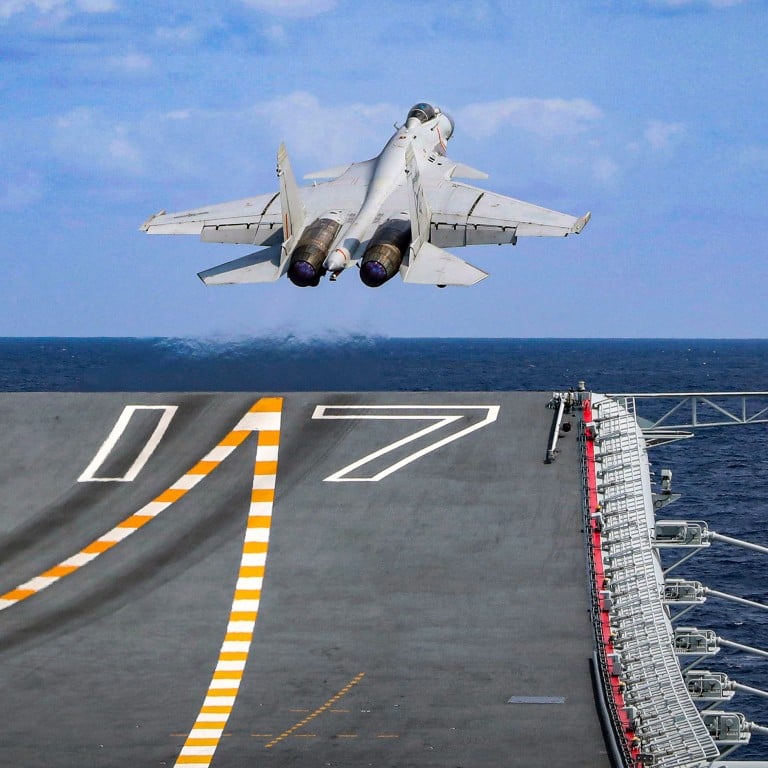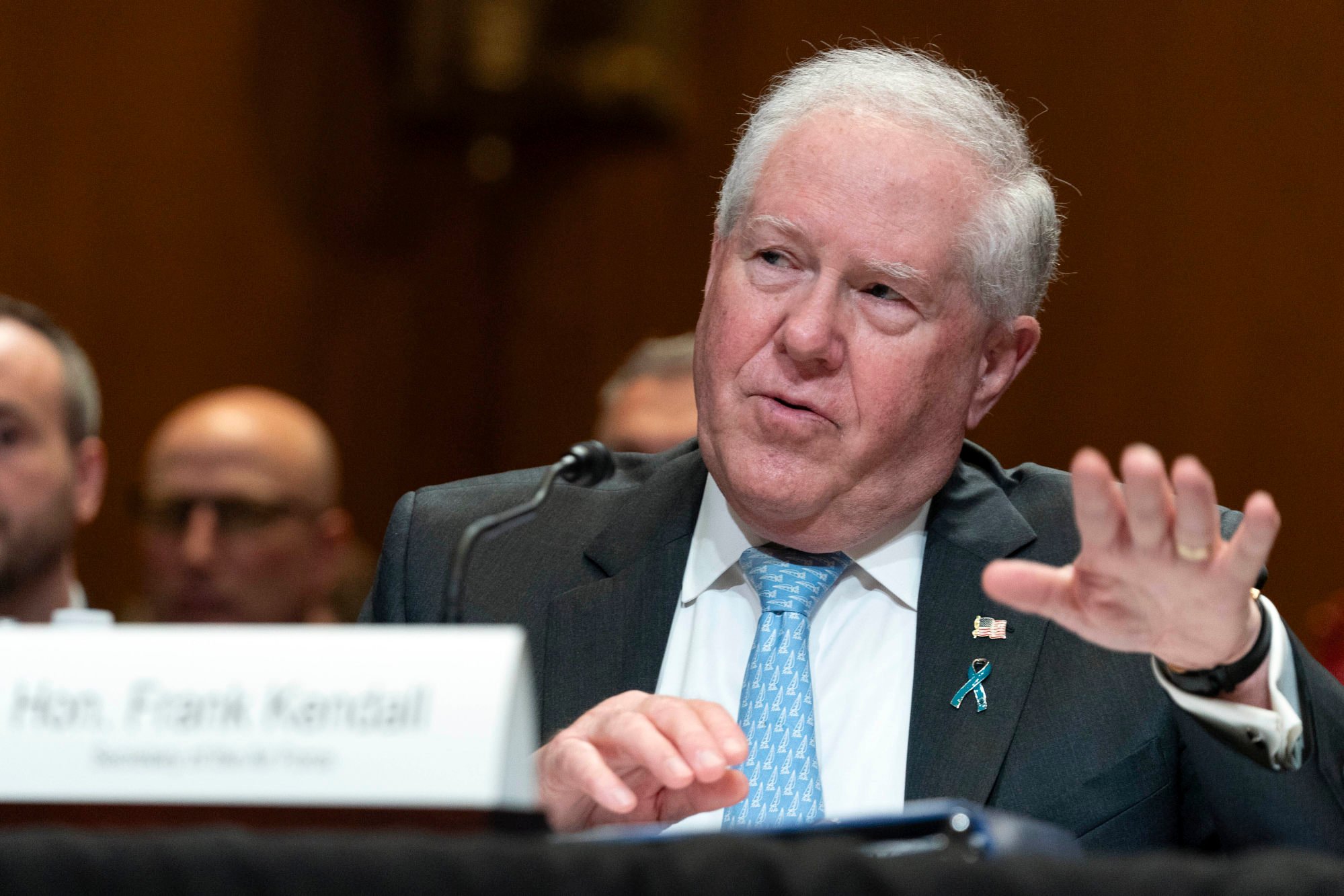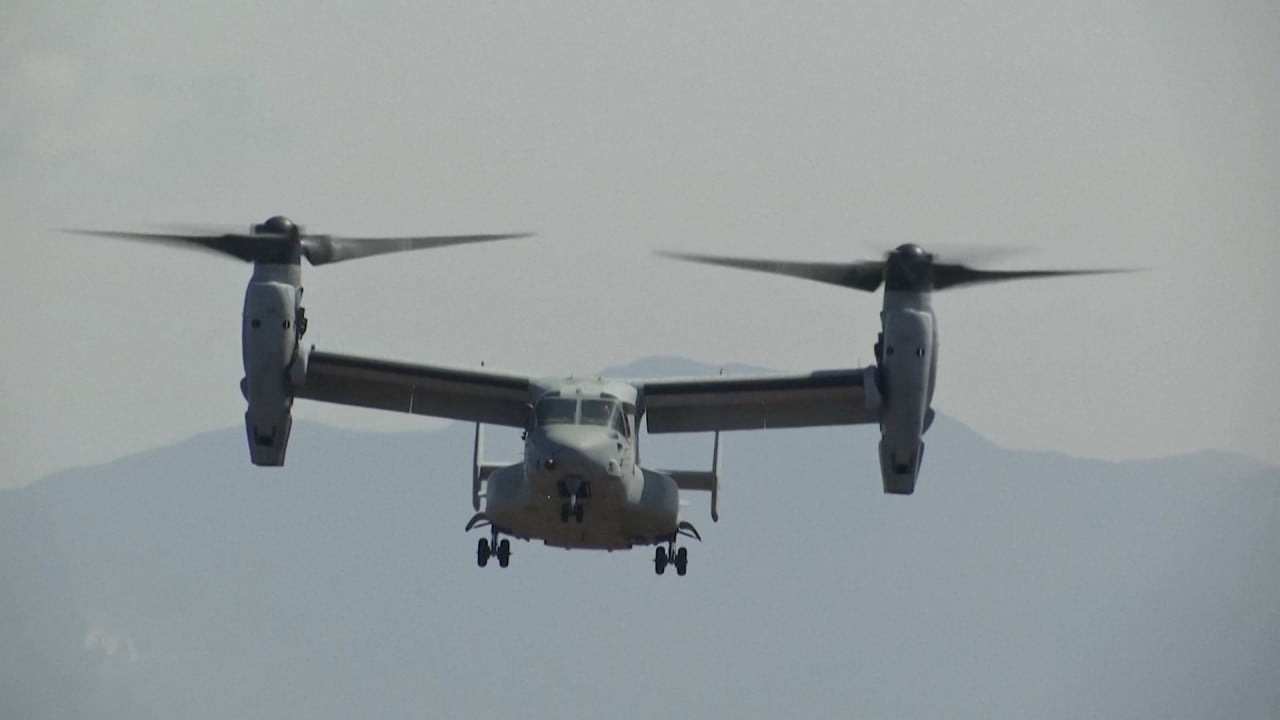
US Air Force budget delays letting China close air superiority gap, top official says: ‘We are out of time’
- New weapons programmes to counter China in the air and space held up by political obstruction, stopgap measures, Senate subpanel told
- ‘The threat keeps changing. It keeps getting worse,’ US Air Force Secretary Frank Kendall says
Addressing the US Senate’s defence appropriations subpanel on Tuesday, Secretary of the Air Force Frank Kendall said China had built larger and more capable forces that could challenge the US military.
US overhauls air force to meet China challenge. Will it work?
“Time is my greatest concern,” Kendall said. “We are in a race for military technological superiority with a capable pacing challenge [in China]. Our cushion is gone. We are out of time.”
The act was a bipartisan agreement introduced in May last year to suspend the debt ceiling through to January 1, 2025. The law imposed limits on discretionary spending, including defence programmes, in exchange for lifting the debt ceiling before the government ran out of funding to pay federal obligations.

In the Pentagon’s 2025 financial year budget request announced last month, the funding cuts meant that combined spending requests for the two aircraft fell from US$16.6 billion in 2024 to US$14.3 billion in 2025.
As a result, orders for the F-35 were cut from 83 to 68, while requests for the F-15EX were reduced from 24 aircraft to 18.
In contrast, funding for the air force’s sixth-generation air superiority initiative – dubbed Next Generation Air Dominance (NGAD) – rose from US$2.3 billion in 2024 to US$3.3 billion 2025.
The budget proposal would reduce the air force’s fleet from almost 5,200 aircraft to about 4,900, the smallest inventory the service has seen in decades, which Allvin said was necessary given the funding constraints and retirement of older aircraft.
“We’ve made trade-offs to keep the air force’s operational readiness today at the minimal acceptable to meet the nation’s demands while seeking to preserve the previous year’s … advances in modernisation,” Allvin said.
China has boosted annual defence spending by at least 7 per cent in recent years, according to Kendall and other defence officials. China already boasts the world’s largest navy and could soon surpass the US with the largest air force, Pentagon officials have forecast.
China’s 2024 defence budget announced during the “two sessions” last month was 1.67 trillion yuan (US$230 billion), up 7.2 per cent from last year.
Kendall said that after being made aware on Tuesday of “concerning” new classified data, the US Air Force could win any conflict if called upon today, but added that China had been rapidly narrowing the capability gap.
New US nuclear stealth bomber, the B-21 Raider, takes its first test flight
“The threat keeps changing. It keeps getting worse,” he said. “I think we’re at a situation where in the near term, the immediate term, we are at an acceptable level of risk. [But] the risk is increasing over time, and if we focus on the risk today at the expense of … higher levels of risk that we’re going to see [as China] continues to modernise, we’re going to have to be in a very intractable position within just a few years.
“China is actively developing and expanding capabilities to challenge strategic stability, attack our critical space systems, and defeat our ability to project power – especially air power,” he said.
“Conflict is not inevitable. But it could happen at any time.”



